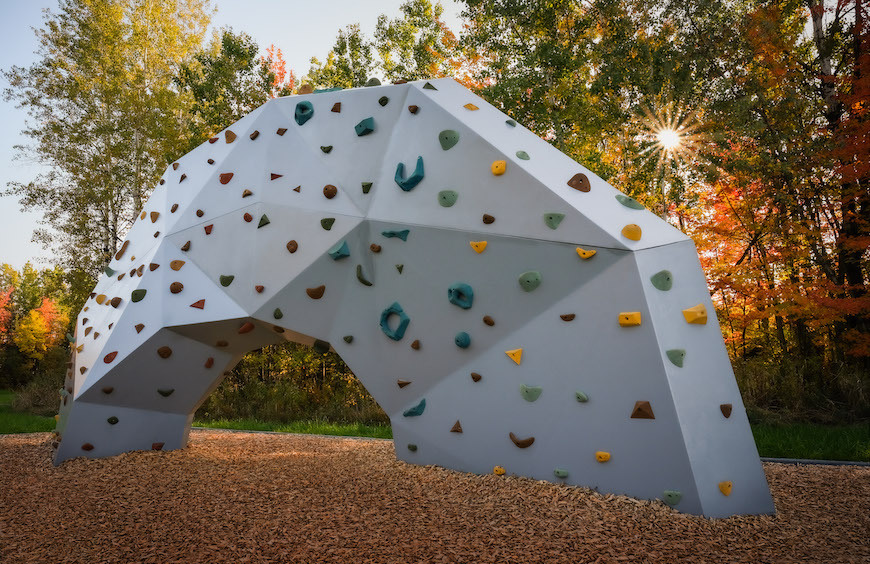Urban Boulders, the new frontier of climbing, have sparked a sense of adventure and thrill among climbing communities and outdoor sports enthusiasts. These structures, designed to mimic the natural boulders found in nature, have transformed the urban landscape and brought a new dimension to climbing. They have attracted a new generation of climbers, igniting a passion for this exciting sport. These structures have not just created climbing communities but vibrant and diverse ones in urban environments, fostering inclusion, creativity, and collaboration among climbers. However, several myths about Urban Boulders can lead to misunderstandings. In this article, we will clarify some of these myths.
Urban Boulders are not aesthetic
Contrary to this myth, urban boulders come in different colors and textures that blend effortlessly into the environment. Their bold colors and intricate shapes are a visual spectacle for anyone. More traditional designs also simulate natural rocks naturally and organically. Their appearance is quite realistic and blends in very well with the environment. Urban Boulders can be designed to fit into any environment and can be an aesthetically pleasing addition to any space.
Urban Boulders are slippery
Urban Boulders are designed for use by people of different ages. There are even unique models for children, and they are made with non-slip materials to ensure safety. Urban Boulders are designed so that the surface and all its grips have a rough surface or are covered with anti-slip material to provide an excellent grip for climbers.
Urban Boulders are exaggerated or large
While large urban boulders are intended to serve as “climbing walls,” smaller urban boulders fit the space available. The supplier in charge of the project should be able to offer boulders that fit any size of space, according to the project’s characteristics. It’s important to note that the cost and maintenance of urban boulders can vary depending on factors such as the size and complexity of the project, the materials used, and the location. However, with proper planning and regular maintenance, urban boulders can be a cost-effective and durable addition to any urban environment.

Urban Boulders are not safe
Unlike boulders and stones in their natural environment, Urban Boulders are designed with safety as the top priority. Their edges are rounded, and their surface is slip-resistant to prevent accidents. Safety is paramount for this type of equipment, and many details are considered in the design to avoid risk. The material selection for their manufacture is of the highest quality, and extra precautions are taken to ensure they are safe for climbers of all ages. This emphasis on safety should ensure the reliability of urban boulders.
Urban Boulders are useless
Urban Boulders are not just climbing structures; they are versatile tools for play, exercise, or rest. They are a beautiful area for climbing and the ideal place to spark children’s imaginations by climbing, crossing, or jumping on them. In addition, urban boulders can be an excellent tool for physical education and physical therapy, providing a fun and challenging way to improve strength, coordination, and balance. This versatility inspires us to explore the various uses of urban boulders.
What did you think of this topic? Do you want to know more about Urban Boulders?
If you want Urban Boulders for your project, playground, community, school, or public park, contact us by visiting the following link.